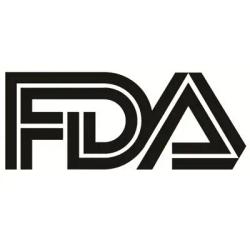
OR WAIT null SECS
The OX40 Ligand Signaling Pathway and Atopic Dermatitis, With Shawn Kwatra, MD
Kwatra spoke at Fall Clinical about several key highlights from his sessions discussing atopic dermatitis, prurigo nodularis, and the OX40 ligand (OX40L).
During the 2025 Fall Clinical Dermatology Conference in Las Vegas, Shawn Kwatra, MD, professor and chairman of dermatology at the University of Maryland School of Medicine, presented 2 sessions regarding inflammatory skin disease management.1
Kwatra spoke in an interview about these 2 presentations, the first of which being titled ‘What’s Itching You Today? Contact Derm? Atopic Derm? What Else?’ Kwatra highlighted some key takeaways in his interview.
“We talked today about many different case presentations of chronic itch, and we had a few key takeaways and pearls,” Kwatra explained. “One of them was that prurigo nodularis has a very unique morphology. You can have various presentations. You can have nodules, papules, excoriations, or plaques. I presented a few cases of patients who had been mislabeled as having neurotic excoriations, and actually they responded very well to biologic therapy. So [it’s important] to ask about that itch when you have the excavated phenotype.”
Kwatra highlighted other key points in the talk, including a discussion of itch and malignancy. He also discussed chronic pruritus of unknown origin.
“There's an immune subset,” Kwatra said. “They don't have to have these blood biomarkers. And many have high IgE, high blood eosinophils, and we know that there's immune-stimulated pruritus, which is a term our group described where folks, even after Covid vaccine or a PDE1-inhibitor for cancer therapy, develop generalized pruritus that responds to therapies, intramuscular triamcinolone and off-label biologics such as dupilumab.”
Later, Kwatra was asked about his session presentation, titled ‘Exploring the OX40 Ligand Signaling Pathway in Atopic Dermatitis.’2
“The way to think about this is that OX40 ligand is the prequel to inflammation,” Kwatra explained. “So we talked about how we see classical cytokines like IL-4, IL-13, IL-31. The question is, how do those cytokines even get there? What is this inflammatory prequel?...There's an epidermal barrier dysfunction in atopic dermatitis, and that allows for antigens to enter the skin, and they actually go to the antigen presenting scale cell, which expresses OX40 ligand interaction with activated T cells.”
Kwatra added that this causes these cytokines to go up and causes T regulatory cells to be suppressed, which he notes are endogenously anti-inflammatory. It also leads to the formation of memory T cells.
“So the thought is that by blocking this ‘inflammatory prequel’ OX40 ligand pathway, you're going to be able to have longer periods of remission to that reduction in memory T cells, and that's what we're seeing,” Kwatra said. “In the STEAM-AD, phase 2b trial, we saw that many of these patients off treatment after 24 weeks maintained response, even after serum levels of the drug had completely diminished and gone away, compared to patients remaining on the drug.”
To find out more about Kwatra’s talk at the Fall Clinical Conference, view the video interview posted above.
Kwatra's disclosures included the following: AbbVie, Arcutis Biotherapeutics, ASLAN Pharmaceuticals, Celldex Therapeutics, Galderma, Genzada Pharmaceuticals, Incyte, Johnson & Johnson, Novartis, Pfizer, Regeneron Pharmaceuticals Inc., Sanofi – advisory board member/consultant; Galderma, Incyte, Pfizer, Sanofi – investigator.
References
Kwatra S. What’s Itching You Today? Contact Derm? Atopic Derm? What Else? Session presentation at the 2025 Fall Clinical Dermatology Conference, Las Vegas, Nevada, Oct 23-26, 2025.
Kwatra S. Exploring the OX40 Ligand Signaling Pathway in Atopic Dermatitis. Session presentation at the 2025 Fall Clinical Dermatology Conference, Las Vegas, Nevada, Oct 23-26, 2025.


